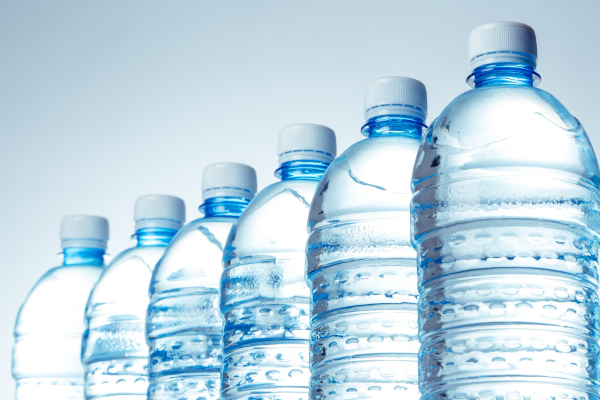Look, groceries and life in general have gotten really expensive. Whether you have bad credit, no credit, or excellent credit, developing good spending habits is important to set yourself for future savings and financial success. Coming up with a list of 7 overpriced grocery store purchases is subjective in a way but isn’t all that difficult when compared to the vital purchases you need that are affordable.
Remember, there are ways to control your grocery spending no matter what your financial situation is. Avoiding these overpriced grocery items is just one of the steps. Making a grocery budget that fits a part of your overall smart budget, making a list, and not using a credit card (at least one that you don’t pay off every month) are good examples of steps you can take to help reduce your grocery bill.
Here are some of the items that are overpriced at grocery stores, and you should skip altogether.
Spices are Typically Overpriced

Spices such as cinnamon, turmeric, oregano, and even salt and pepper are marked up at grocery stores. For common spices, there is typically no difference between buying them at a discount store like Aldi’s. In fact, the price difference is staggering, and proves why spices are on our list of overpriced grocery store purchases. At a typical grocery store, just the items I mentioned above can run between $2 and $5 a bottle – or even more. At Aldi’s or Ollies, the same spice will cost less than $2 or even as low as 50 cents for the same proportion. That’s a pretty massive savings margin.
You do have to watch out for how much you are getting. For example, at Ollie’s you might pick up a large container of cinnamon for $6 that will last you until the apocalypse. However, spices (especially ground ones) have a shelf life of a few years. The bottom line is being a bargain hunter pays off.
Name Brand Cereal

There are those who will say that name brand cereal tastes better than store brand or generic and has no place on this list of overpriced grocery store purchases. Or the value just isn’t there. The makers of the brand name cereal often offer “white label” options for many of their offerings. Frosted Flakes, Cheerios, Shredded Wheat, and Raisin Bran are common examples of this. They sell these no label options to grocery stores and other chains which put their label on it and sell for a discount. It’s a win-win because both sides enjoy the sale and profits. All the white label brand has to do is change the name to something generic.
And the difference in savings is again, massive. At Wegmans, you can buy the name brand Frosted Shredded Wheat for $4.79 a box. Currently, the generic Wegmans brand of the same cereal is $1.99, which is a savings of $2.80. And the taste is the same.
There are some cereals that do not have generic equivalents for various reasons. For these, you can either choose to buy once in a while as a “treat” or change to a cereal that you like with similar taste and benefits. Also, the cost of these “exclusive” cereal is typically much higher than anything with a generic label.
Bottled Water

Here’s our first example of paying for “convenience” over value – and it’s a big one when it comes to overpriced grocery store purchases. I’m sure you either have a case of bottled water at home with you or at least have had one. In a pinch, bottled water does have its place. For example, going on a road trip or traveling in a car to someplace that you are not sure has clean potable water. Rather than spend $2 or more on a single container or beverage, it is better to spend $4 or $5 (or more) on a case of bottled water.
But if you are just using it at home, bottled water just doesn’t make financial sense. Consider that $5 you paid for 24 bottles of water costs about 21 cents per bottle. And again, in light of a beverage purchase at a restaurant or similar costs $3, it makes good sense to replace it with bottled water.
According to United States Now, it costs on average 1 cent per 5 gallons of water. An a typical 24 pack of water has a little over 3 gallons of water (about 3.17). So it would cost less than 1 cent to get the same water. That 21 cents you spent isn’t looking too good anymore, is it. And of course, that’s not even mentioning the health & environmental impacts of the plastics and manufacturing process.
Alternatives would be to bring a refillable bottle with you and use your tap water to fill it. For those who don’t trust the tap water, investing in a purifying water pitcher to consume while at home would be an ideal investment. While it may have more of an upfront cost, it will more than pay for itself in the long term.
K-cups & One Time Use Coffee Pods

I’ll admit that I like my coffee in the morning. And the allure of just popping a single serving into a machine and letting it brew my coffee, along with the convenience of just disposing the pod with no measuring and no mess is pretty great. But again, with that convenience comes a huge cost.
The measurements will vary based on how strong you like your coffee but consider that a 12 pack of K-cups can run you between $6 and $10 depending on the brand. That’s of course 12 cups of coffee. A bag of coffee grounds will run you about $5-$10, depending on the brand and roast. And it will give you about 30 cups, again, depending on what coffee you are making and your taste preference.
Doing the math again, K cups will cost about 50 cents per cup ($0.50), which again is much better than the $3 or $4 (or more) you might spend buying coffee at a Starbucks or Tim Hortons or wherever you might go. But let’s look at the ground coffee. Grounds will cost you about 17 cents per cup ($0.17) using the same assumptions.
Consider investing in a reusable coffee pod, and you can continue to use your pod coffee brewer. Or you can also try using a French Press or a more traditional coffee maker.
Impulse Purchases

When it comes to overpriced grocery store purchases, impulse buying isn’t a unique phenomenon. You see this same type of marketing at many other retailers. Placing candy, gum, mints, beverages, bottled water and similar items at strategic points in the store almost drives you to buy them. If you are a parent, you know this all to well. After struggling with kids through the store, they see candy or gum and at that point in your trip, you give in. After all, what $2 or $3 per candy to satisfy or reward your kids.
Or perhaps the buy is for you. You perhaps forgot something (remember to always bring a list) or made the mistake of going to the store hungry – so you probably overbought as it is. But that single protein bar looks oh so tempting and would satisfy your hunger.
The costs of these items is marked up for individual purchase. Consider that $2.49 protein bar. A box of four of those bars could cost $5.99, which equates to $1.49 each. The $1 markup is the single serve difference, and the cost of your impulse buy.
The impulse buying doesn’t stop at the register line while you are waiting to checkout and are almost “forced” to stare at these items or the overpriced magazines. If you go to the store without a list, or worse, when hungry, you will overbuy and overspend. Its always best to go with a plan and at least have a snack before you depart for the store.
OTC Pain Relievers and Medicine

Name brand OTC medicines like cold remedies, aspirin, acetaminophen, ibuprofen to name a few are expensive enough to buy. You should compare ingredients and labels fully to make sure they are the same and treating the same symptoms. But by and large, generic OTC medications are the same and offer the same relief at a fraction of the cost.
What’s more is grocery stores often increase the prices of not only name brand but generic or store label brands as well. So, it’s definitely best to stay away from the OTC medicine aisle at grocery stores. Your better bet might be to go to a drug store or even a wholesale retailer like an Aldi for this as well. The medicine is most likely the same but with a large cost savings. Again, be wary of the sizes and expiration dates. Chances are good you will get more bang for your buck by buying in bulk, but the OTC medicine may expire before you ever use it. This negates the savings.
Single Serve Items or Mini Packs

Here is another convenience you pay for in the form of overpriced grocery store purchases. Mini packs of pretzels, chips, vegetables are packaged in proportioned sizes for on-the-go convenience, or in specific low calorie amounts if you are watching your weight or what you eat. Again, the convenience of grabbing and go without having to worry about measuring or prepping anything is enticing.
You pay a premium for this convenience. Consider that a bag of pretzels costs $3. Six individual bags of pretzels might be the same cost. But look at the weights. You tend to get 5 to 10x more pretzels in the larger bag than you do in the individual bags – sometimes even combined! You are better buying the larger bag and proportioning out the serving sizes yourself in individual bags for the same grab and go convenience.
Single Servings also fall into the same category. These are smaller, single serve packs of common food that can be popped in the microwave and cooked for a meal, side, or snack. Take macaroni and cheese for example. A single serve container of mac & cheese might cost $1 and come in its own cup. A box of macaroni and cheese costs less than a $1 (sometimes even $.50) and contains 4-8 times more servings than your single serve.
Resisting these Overpriced Grocery Store Purchases
No one is immune to these purchases or temptations they offer. In fact, sometimes it is worth it to splurge and buy something along these lines – if it makes sense. The key is moderation and smart spending. Understand why you would buy the items, and if it still makes sense then allow yourself to buy it. A classic example is going on a trip. It is better to buy items like these at a grocery store and pay for the convenience up front rather than buy a more expensive option later.
Take for instance going on a family trip. You could go out to breakfast each day, or you could buy individual oatmeal packets and cereal to eat for breakfast on one or more of the days, and save the restaurant for a special occasion. The cost is staggering. If you eat out at breakfast 3 days, you will be spending over $100 for a family of 4. If you bought a box of oatmeal, some cereal and perhaps some milk and juice, you will spend around $20 and have breakfast for the same amount of time. Then save breakfast for one of your days as a treat for you and your family.
I hope this helps you shop smarter while shopping for food while avoiding overpriced grocery store purchases. Good luck.
